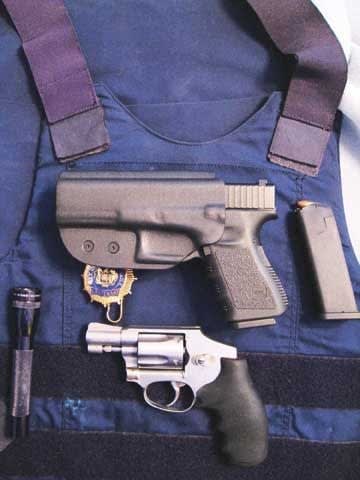When you remain unidentified, the people you deal with-whether armed or not-may try to run or resist you, which can be dangerous for you and them.
When you can, say who you are and show who you are. Don't just say that you're a police officer; show your badge, shield, ID or credentials. Wear a raid jacket when possible. In a noisy or stressful situation, someone may not hear or understand your spoken ID or warning.
If you are challenged by uniformed or identified officers who don't know who you are, do what they say. In any confrontation between officers, the uniformed or identified officer is in charge. Period.
Don't Stop Cars or Search Buildings Unless You Really Have To. Ideally, if you have to stop a car, do it together with uniformed officers in a marked vehicle or call uniformed officers to the scene after you pull the car over so that the person stopped would know you're law enforcement personnel. If that's not possible, have identification out, wear a raid jacket or other identifying clothing, and clearly identify yourself to the people you stop. If there is a problem or question about your identity, have a uniformed unit respond.
Searching a building can be exceptionally dangerous in plain clothes. If someone calls 911, thinking you're an armed burglar or robber, responding uniformed or plainclothes officers may come searching for you, guns drawn. If you must search a building in plain clothes, it's far safer for each plainclothes officer to search together with a uniformed officer. And each plainclothes officer should wear a raid jacket, cap, or other identifying garment.












